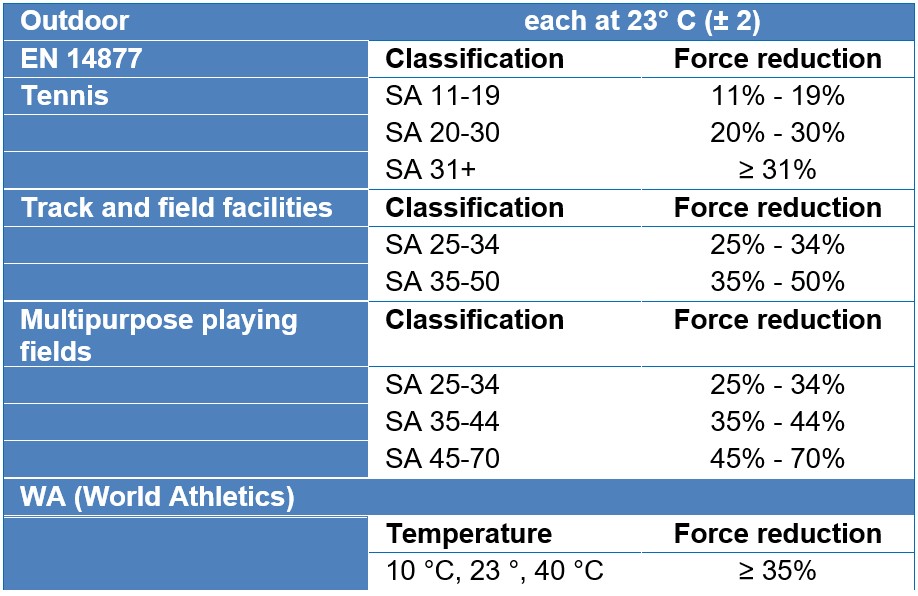Shock absorption measurements for outdoors and indoors
21. December 2021
High or low shock absorption – which is better?
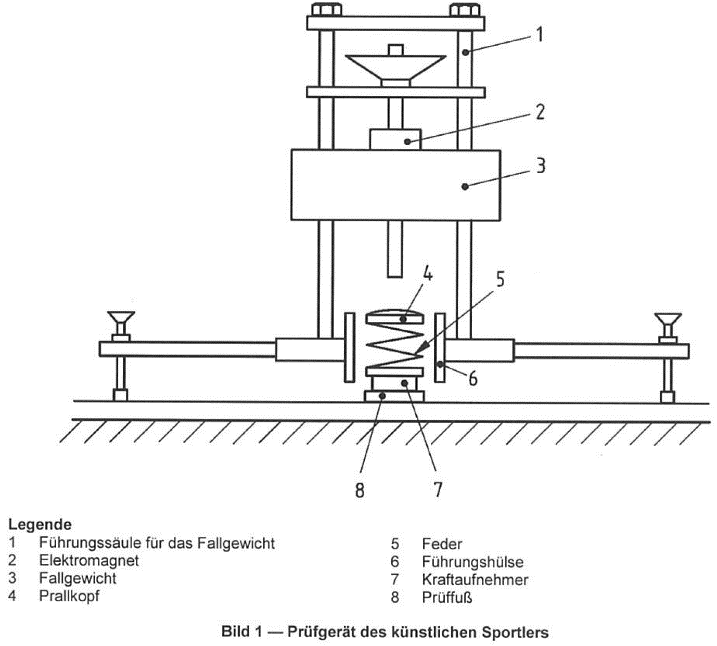
Definition – quoted from the standard 14808:2006-03 “Sports areas – determination of shock absorption”
Shock absorption is the ability of a sports floor to reduce the impact force of a body falling on the surface.
The shock absorption is measured on every sports floor in accordance with EN 14808, the “target values” can then be found in the relevant standards for running tracks, multi-purpose playing fields, tennis courts (EN 14877) or sports hall floors (EN 14904).
The measurement is performed with the “Berlin Artificial Athlete” (see sketch above right).
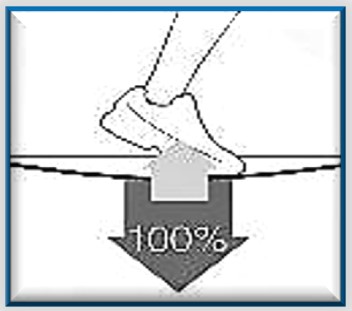
The shock absorption represents the reduction of the rebound force (impact force) of the sports floor compared to a rigid floor, expressed as a percentage.
The more pliable the floor, the greater the reduction in rebound force. On concrete floors, this is 0%, i.e., full force of the impact must be absorbed by the user. The higher the shock absorption, the more force is absorbed by the ground.
Thus, the shock absorption represents the protective function of the sports floor in an uncontrolled fall.
High shock absorption reduces the risk of injury (in case of a fall), and reduces the stress on joints, muscles and ligaments.
So is a high shock absorption figure better?
It’s not that simple: there are other factors to consider, such as:
- Age / weight of the (main users)
- Sport (main use)
- Use for training or competition
- Use for other purposes (events)
- Type of sports floor
In sports halls, a distinction is made according to the type of sports floors:
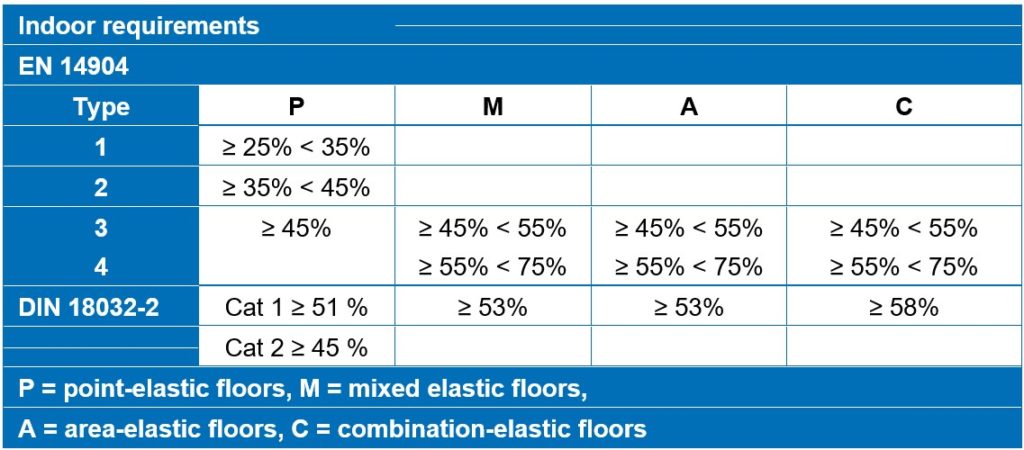
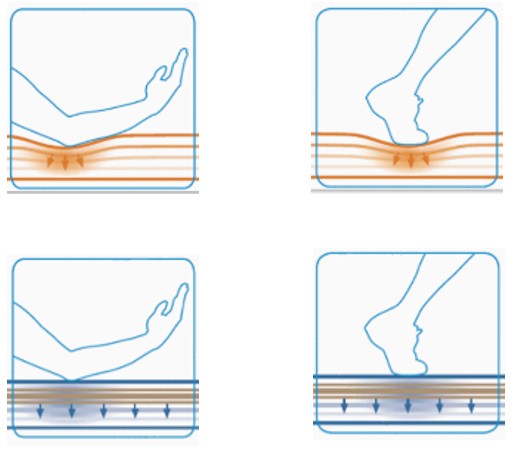
The point-elastic floor absorbs the impact forces like a shock absorber. This makes the floor ideal for children. The risk of injury is significantly reduced, because an impact is optimally absorbed with a low weight.
The area-elastic floor usually has higher shock absorption values. By distributing the impact force over a larger area, this type of floor is particularly suitable for adults, and is also gentle on the joints as well as being stable. It’s also ideal for wheelchair sports and multi-purpose use.
A higher shock absorption value is not necessarily better – this depends on the user and the type of use.
And how does it work outdoors?
Here, too, specifications exist that are laid down in the standards.
As these specifications also show – the decisive factor is the type use
As WA writes in their “Track and Field Facilities Manual” 2019 – Chapter 3 page 95
The safety of athletes and their protection against injury in training and competition is of special significance for the requirements for the sports surface. It is recommended that training facility synthetic surfaces generally have higher shock absorption than competition facilities . Page 105
Requirement The dynamic interaction between the athlete and the surface is significant to the performance and safety of the athlete. Therefore, the ability of the surface to reduce force (absorb energy) is important. The dynamic behaviour of athletics track surfaces is complex. Two of the major components of the interaction between an athlete and the surface are the deformation under load of the surface and the ability of the material to either absorb or give back the energy of impact of the foot. Biomechanical studies over many years have confirmed the complexity of the foot / surface “model” and have revealed the extent of the variation in loading and duration of load between not only different sports, but different athletics events. As has been explained elsewhere in this chapter, it is possible to formulate synthetic surfaces which favour, or are more suitable for, one type of event against another. All current surfacing systems therefore represent a compromise between the various needs of the different athletics events.
In other words:
high shock absorption = ideal for training and school/recreational sports, better protection against injuries and from long-term damage.
low shock absorption = ideal for (high-)performance competitions – depending on the event: Marathon runners prefer softer surfaces, while sprinters, on the other hand, prefer harder ones.
Our sales department will be happy to help you choose the “right” sports floor for you.
